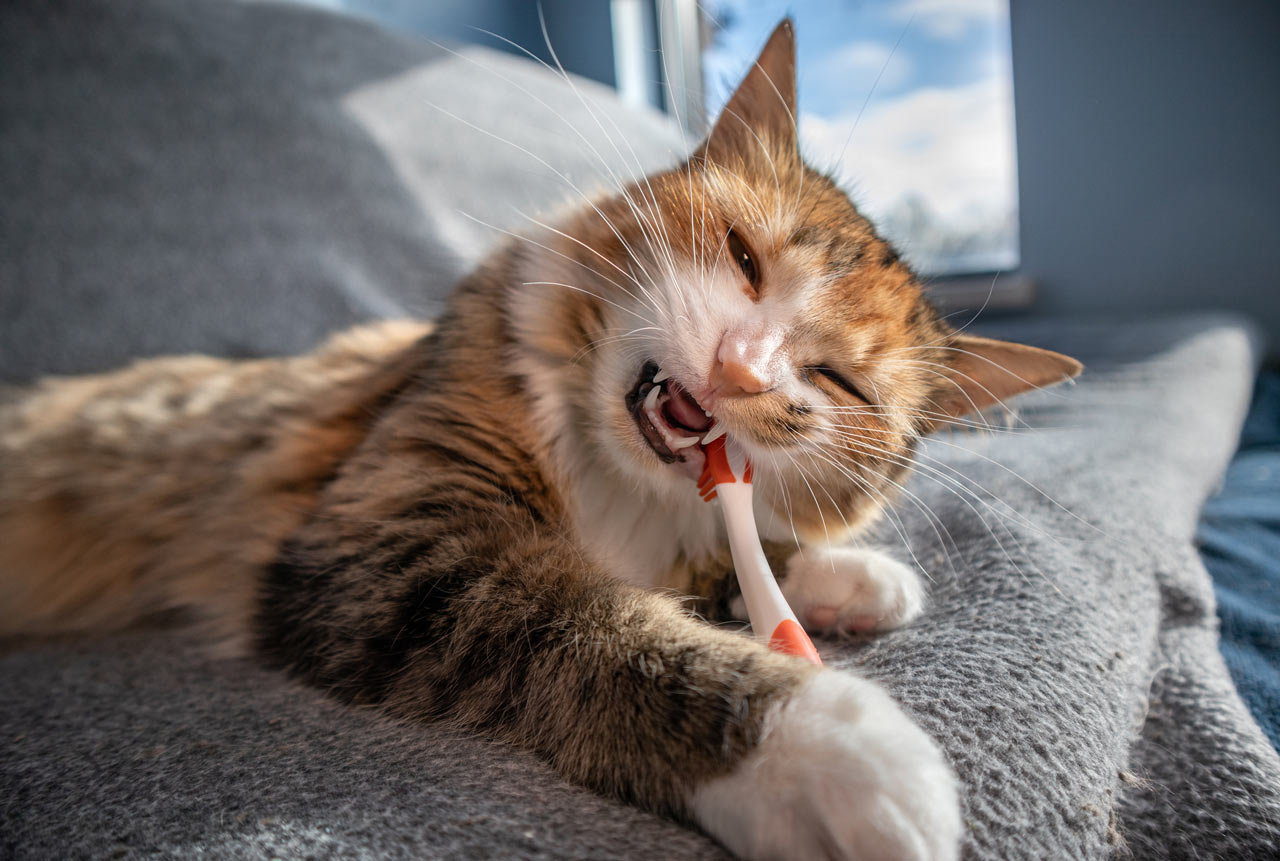The Hidden Danger in Your Cat's Mouth: Why Dental Health Matters

Why Dental Health Is Essential for Cats
Did you know that most cats over the age of three already have some form of dental disease? In fact, nearly 70% of cats show signs of periodontal disease by this age. Dental health is often overlooked, yet it's one of the most important factors for ensuring your cat lives a longer, healthier, and more comfortable life.
The Silent Threat of Dental Disease
Dental disease in cats is one of the most common — and most underdiagnosed — health issues. What starts as plaque and tartar can progress to painful gingivitis and periodontal disease, which not only damages the mouth but can also affect the kidneys, liver, and heart if bacteria enter the bloodstream.
Signs Your Cat May Have Dental Problems
Cats are masters at hiding pain, so dental disease often goes unnoticed until it's advanced. Watch for these subtle and not-so-subtle signs:
- Persistent bad breath in cats
- Drooling or pawing at the mouth
- Difficulty chewing or reluctance to eat dry food
- Preference for soft food or avoiding crunchy treats
- A quieter cat, or changes in normal behavior
Even subtle changes can be a clue that something is wrong.
Severe Oral Disease: Feline Stomatitis
While gingivitis and periodontal disease are common, some cats develop a far more serious condition called stomatitis (also known as feline chronic gingivostomatitis, FCGS).
- This is a severe, painful inflammation of the gums and oral tissues.
- Cats may show extreme pain when eating, drool excessively (sometimes with blood), and lose weight.
- The exact cause isn't fully understood, but it's thought to be an overreaction of the immune system to plaque.
- Treatment often involves removing most or all of the cat's teeth — a procedure that surprisingly gives many cats relief and allows them to eat comfortably again.
If you notice severe oral pain or reluctance to eat, talk to your veterinarian right away.
Prevention: The Key to Healthy Teeth
Good dental care should be part of every cat's wellness plan. Here's how to protect your cat's teeth:
- Daily Toothbrushing — The gold standard. Use a cat-safe toothbrush and toothpaste (never human toothpaste). Learn how: How to Brush Your Cat's Teeth.
- Dental Diets & Treats — Specially formulated foods and chews can help reduce plaque and tartar.
- Water Additives — Easy to use and can support oral health between brushings.
- Annual Veterinary Dental Cleanings — Professional cleanings allow your veterinarian to remove tartar, check under the gumline, and address issues early.
Multi-purrpose Cat Tool 🐾
If you struggle with brushing, try a multi-purpose cat dental care kit (toothbrush, finger brush, and cat-safe paste). Making dental care part of play or cuddle time can make the process easier — and even enjoyable — for both of you.
The Bigger Picture: Whole-Body Wellness
Dental care isn't just about fresh breath — it's about your cat's overall health and comfort. Cats with healthy mouths are happier, eat better, and often live longer lives.
Don't delay. Take a peek inside your cat's mouth today. What you see (or smell!) might surprise you — and starting a conversation with your veterinarian could add years to your cat's life.
You May Also Like These Articles:
Bad Breath in Cats: What It Really Means
How to Brush Your Cat's Teeth Without Stress
How to Brush Your Cat's Teeth Video
Common Dental Problems in Cats





